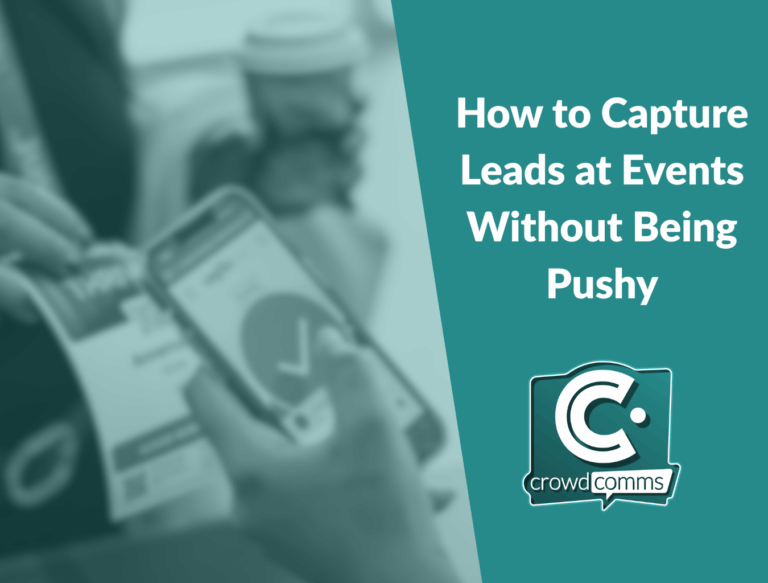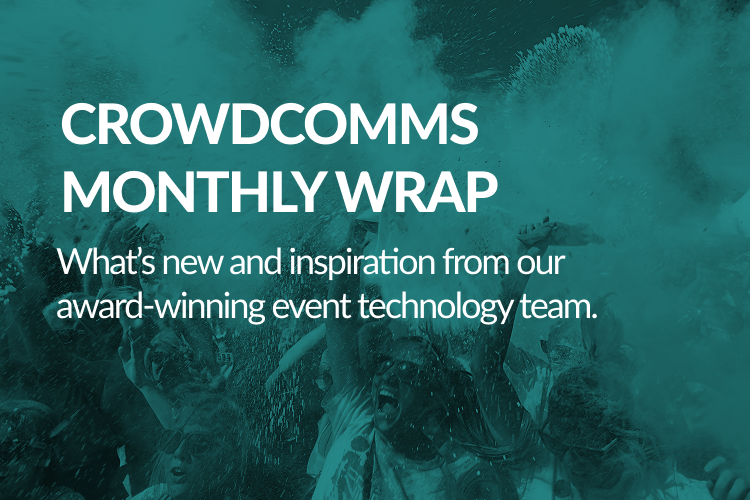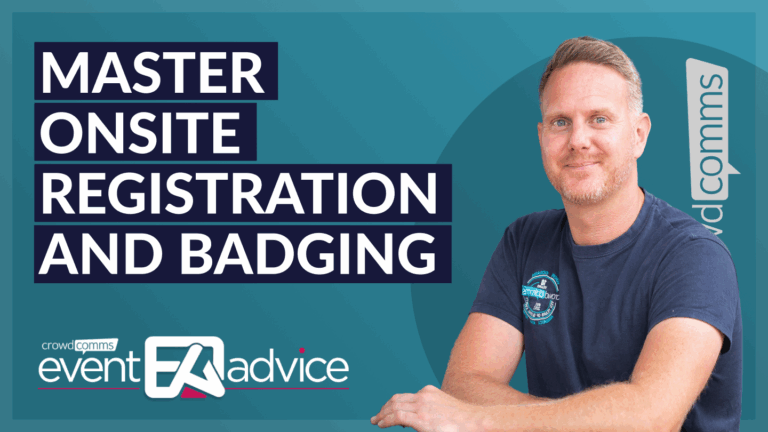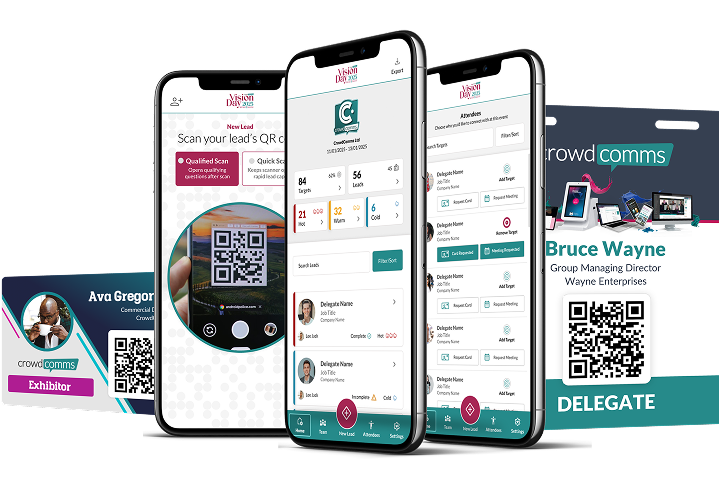
You know the moment.
That split-second when an attendee’s curiosity is replaced by the fear of being “sold to.”
All sales and marketing teams want leads. Every attendee wants value. And somewhere between those two truths is the fine line between being memorable and being that booth everyone avoids. Learning how to capture leads at events without being pushy isn’t just a matter of etiquette, it’s a competitive advantage. Because in a world where attention is scarce and trust is earned, the gentlest approach often wins the strongest results.
Let’s dig into what separates exhibitors sales teams who attract leads effortlessly from those who unintentionally repel them – using the right lead capture tool.
The Real Problem: A Lead Isn’t a Person Anymore, It’s a KPI
Event organizers and exhibitors talk about “lead capture” the way meteorologists talk about rainfall.
“How many leads did we get?”
“What’s the quality of the leads?”
“Are we tracking leads across events?”
Somewhere along the way, the human event attendee underneath the badge got lost.
When exhibitors treat attendees like lead data points instead of potential partners, they slip into the behaviors none of us like:
- Over-eager scanning
- Forced demos
- Pushy qualification scripts
- Gated conversations (“Let me scan you, then I’ll tell you…”)
This creates a tension felt across the industry: exhibitors want more meaningful conversations, but attendees are fatigued by interactions that feel purely transactional.
The paradox?
The harder brands push to collect leads at events, the fewer meaningful qualified leads they actually get.
So what’s the smarter way forward? How do we encourage attendees to share their most prized possesion, their contact details?
Lead Retrieval Works Best When It Feels Like a Natural Part of the Event Experience
Think of effective lead capture at trade shows like a river: it should pull people in with a current, not a shove.
Great exhibitors don’t force the moment, they design for it.
They think strategically about:
- Energy flow (What draws people naturally into the space?)
- Storytelling flow (How does the booth explain itself without a word?)
- Conversation flow (How does the attendee feel after speaking to us?)
- Technology flow (How does the lead capture process disappear into the experience?)
Lead capture shouldn’t be a moment, it should be a seamless thread running through the entire booth journey.
Let’s break down how to do this in practice.
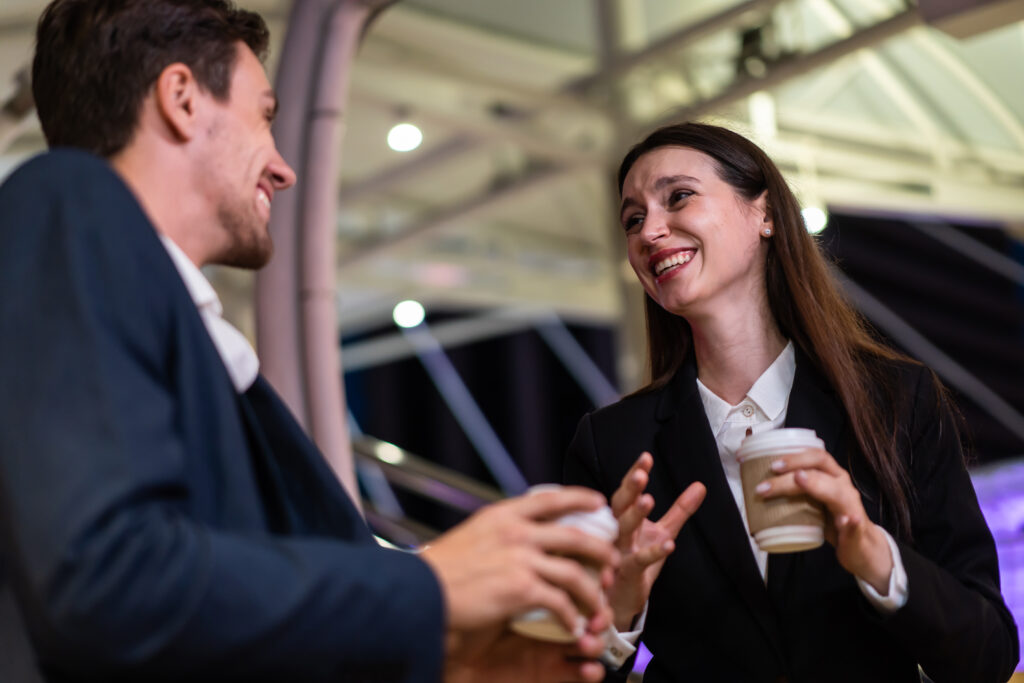
How to Capture Leads at Events Without Being Pushy: 5 Practical Strategies That Actually Work
Build a Booth That Starts the Conversation for You
If your team has to explain everything verbally, you’re already losing the silent sales pitch. Attendees should understand within three seconds:
- Who you are
- What you solve
- Why they should care
This doesn’t mean brighter screens or bigger text. It means clarity over clutter. It means boosting engagement.
Some of the best exhibitors use:
- One bold pain-point statement
- A visual that shows the transformation
- Clear, minimal CTAs (“See it in action” / “Try the quick demo”)
When attendees “get it” immediately, conversations start with curiosity, not scepticism.
That’s the first step to natural lead capture.
Train Your Team to Be Hosts, Not Hunters
You’ve seen hunters:
Standing at the edge of the booth
Scouting badges
Scanning the horizon for prospects
Pouncing at the first sign of eye contact
Hosts, however, focus on creating a great experience.
They greet people with openness, not objectives.
They listen first, talk second.
They ask thoughtful questions, not qualifying ones.
To train your team as hosts:
- Teach them to look for body language cues (pace, eye movement, dwell time)
- Encourage non-sales conversation starters
- Focus on identifying needs before presenting solutions
- Make curiosity your team’s default setting
Pushy exhibitors capture lots of scans.
Great exhibitors capture conversations that convert.

Create Low-Commitment Entry Points to “Say Yes”
A scan is a big step for an attendee.
What if you give them smaller steps that feel comfortable and low risk?
Consider micro-engagements like:
- A 30-second interactive demo
- A quiz that helps identify their event challenges
- A small “assumption-busting” activity
- A touchscreen workflow explorer
- A “choose your problem” selector
- A moment of personalization (“Tell us your biggest event headache? Choose a card.”)
These are powerful because they do three things at once:
- Engage the attendee
- Start a meaningful conversation
- Naturally lead to a moment where scanning makes sense
That’s how you capture leads at events without forcing it.
The interaction creates its own gravity.
Use Lead Capture Tools That Don’t Break the Moment
Nothing kills a great conversation like clunky tech.
Your lead capture tool should feel like part of the natural flow, not a transaction. That means:
- Quick scan, instant notes
- Tagging interests without interrupting conversation
- Fast-loading forms
- Customizable fields
- Automatic syncing
- Offline mode (because event Wi-Fi will betray you)
- Easy handoff between booth team members
When your technology works quietly in the background, the conversation stays in the foreground, where it belongs.
Bonus tip: Always allow your team to scan at the end of the conversation, not the beginning.
Scanning up front feels like a toll gate. Scanning afterward feels like capturing something mutually valuable.
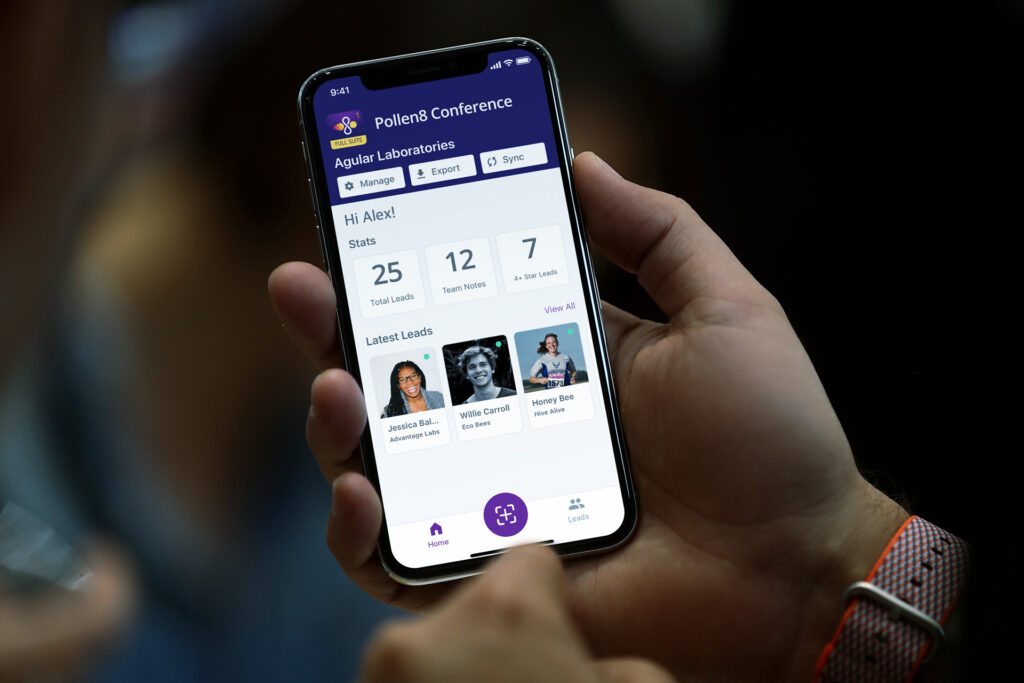
Reframe Your Follow-Up as a Continuation, Not a Chase
Lead capture doesn’t stop at the scan.
In a world full of “bcc blasts” and generic follow-ups, the quickest way to stand out is to continue the human moment you created.
Smart follow-up includes:
- A reference to the attendee’s specific challenge
- A reminder of what they explored or saw
- A short, value-driven takeaway
- One clear next step (not six)
- A tone that sounds like a person, not a template
The goal isn’t to close. It’s to reconnect with the feeling of the conversation.
If the in-person interaction was enjoyable, authentic, and helpful, your follow-up becomes welcome, not ignored.
How CrowdComms Helps Exhibitors Capture Better Leads Without Being Pushy
At CrowdComms, we’ve seen the full spectrum of exhibitor lead capture strategies, from brilliantly human to aggressively transactional. The exhibitors who perform best have something in common: they use tech that supports conversation, not replaces it.
CrowdComms’ lead retrieval tools are built to be invisible in the best way:
- Fast scanning that keeps the conversation moving
- Instant notes so teams remember context
- Qualified fields that actually match how exhibitors work
- Real-time syncing to give organizers and exhibitors visibility
- Flexibility to adapt to the way different teams sell
It’s event tech designed for people who value people. Because lead capture should feel like a natural part of a great booth experience, not a barrier to it.
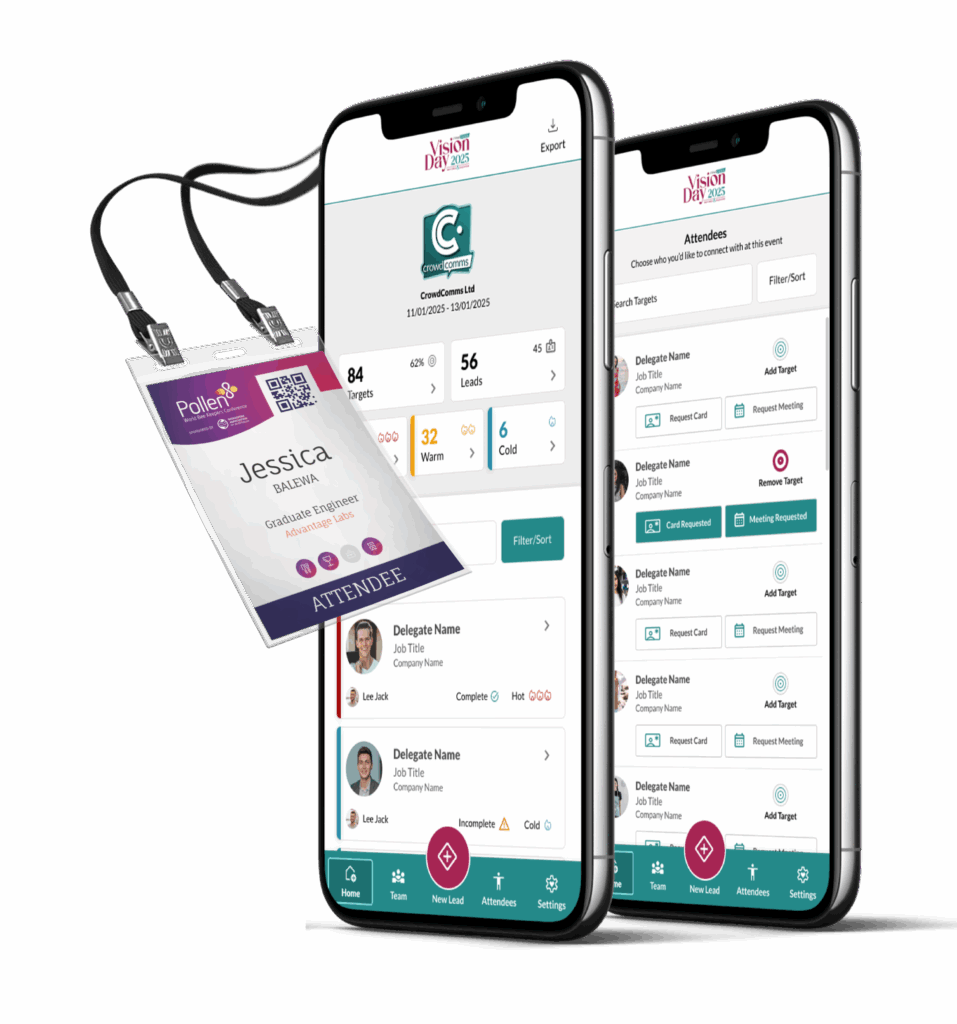
Lead Capture Isn’t About Pressure, It’s About Event Presence
The best exhibitors don’t win because they push harder. They win because they connect better.
They create a booth that feels like a clearing in the forest, welcoming, open, and full of possibility.
People wander in because it feels good to be there. They stay because the conversation feels real. And they share their details because the moment feels worth continuing.
When you treat lead capture as part of an experience, not a transaction, you don’t just collect names. You grow relationships.
And those are the leads that last.
